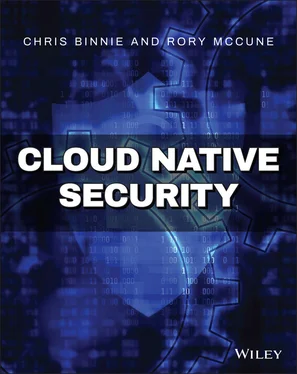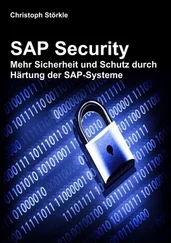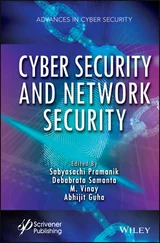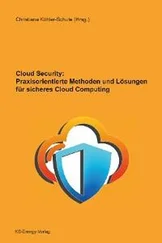12 Chapter 18Figure 18.1: Rakkess outputFigure 18.2: Rakkess output for the certificate-controlleraccountFigure 18.3: kubectl-who-can get secretsFigure 18.4: Example of rbackoutput
13 Chapter 19Figure 19.1: Traffic flow in the base Kubernetes clusterFigure 19.2: Network traffic after default deny policies appliedFigure 19.3: Network traffic after allow-webapp-accesspolicy added
14 Chapter 20Figure 20.1: PodSecurityPolicies
1 Cover
2 Table of Contents
3 Begin Reading
1 iii
2 xix
3 xx
4 xxi
5 xxii
6 xxiii
7 xxiv
8 1
9 3
10 4
11 5
12 6
13 7
14 8
15 9
16 10
17 11
18 12
19 13
20 14
21 15
22 17
23 18
24 19
25 20
26 21
27 22
28 23
29 24
30 25
31 26
32 27
33 28
34 29
35 30
36 31
37 33
38 34
39 35
40 36
41 37
42 38
43 39
44 40
45 41
46 42
47 43
48 45
49 46
50 47
51 48
52 49
53 50
54 51
55 52
56 53
57 54
58 55
59 56
60 57
61 58
62 59
63 60
64 61
65 62
66 63
67 65
68 66
69 67
70 68
71 69
72 70
73 71
74 72
75 73
76 74
77 75
78 76
79 77
80 79
81 80
82 81
83 82
84 83
85 84
86 85
87 86
88 87
89 88
90 89
91 90
92 91
93 92
94 93
95 94
96 95
97 96
98 97
99 98
100 99
101 100
102 101
103 103
104 104
105 105
106 106
107 107
108 108
109 109
110 110
111 111
112 112
113 113
114 114
115 115
116 116
117 117
118 118
119 119
120 120
121 121
122 122
123 123
124 124
125 125
126 126
127 127
128 129
129 130
130 131
131 132
132 133
133 134
134 135
135 136
136 137
137 138
138 139
139 140
140 141
141 142
142 143
143 144
144 145
145 146
146 147
147 148
148 149
149 150
150 151
151 152
152 153
153 154
154 155
155 156
156 157
157 158
158 159
159 160
160 161
161 162
162 163
163 164
164 165
165 166
166 167
167 168
168 169
169 170
170 171
171 172
172 173
173 174
174 175
175 176
176 177
177 178
178 179
179 180
180 181
181 182
182 183
183 184
184 185
185 186
186 187
187 188
188 189
189 190
190 191
191 192
192 193
193 194
194 195
195 196
196 197
197 198
198 199
199 200
200 201
201 202
202 203
203 204
204 205
205 207
206 208
207 209
208 210
209 211
210 212
211 213
212 214
213 215
214 216
215 217
216 218
217 219
218 220
219 221
220 222
221 223
222 225
223 226
224 227
225 228
226 229
227 230
228 231
229 232
230 233
231 234
232 235
233 236
234 237
235 239
236 241
237 242
238 243
239 244
240 245
241 246
242 247
243 248
244 249
245 250
246 251
247 252
248 253
249 254
250 255
251 256
252 257
253 258
254 259
255 260
256 261
257 262
258 263
259 265
260 266
261 267
262 268
263 269
264 270
265 271
266 272
267 273
268 274
269 275
270 276
271 277
272 278
273 279
274 280
275 281
276 282
277 283
278 284
279 285
280 286
281 287
282 288
283 289
284 290
285 291
286 292
287 293
288 294
289 295
290 296
291 297
292 298
293 299
294 300
295 301
296 302
297 303
298 304
299 305
300 306
301 307
302 iv
303 v
304 vii
305 ix
306 308

Chris Binnie
Rory McCune

There is little doubt that we have witnessed a dramatic and notable change in the way that software applications are developed and deployed in recent years.
Take a moment to consider what has happened within the last decade alone. Start with the mind-blowing levels of adoption of containers, courtesy of Docker's clever packaging of Linux container technologies. Think of the pivotal maturation of cloud platforms with their ever-evolving service offerings. Remember the now-pervasive use of container orchestrators to herd multiple catlike containers. And do not forget that software applications have been teased apart and broken down into portable, microservice-sized chunks.
Combined, these significant innovations have empowered developers by offering them a whole new toolbox from which their software can be developed, and a reliable platform that their applications can be deployed upon.
In hand with the other recent milestone innovations in computing, such as the growth of Unix-like operating systems and the birth of the web and the internet as a whole, Cloud Native technologies have already achieved enough to merit a place in the history books. However, as with all newly formed tech, different types of security challenges surface and must be addressed in a timely fashion.
Cloud Native security is a complex, multifaceted topic to understand and even harder to get right. Why is that? The answer lies with the multiple, diverse components that need to be secured. The cloud platform, the underlying host operating system, the container runtime, the container orchestrator, and then the applications themselves each require specialist security attention.
Bear in mind too, that the securing and then monitoring of the critical nuts and bolts of a tech stack needs to happen 24 hours a day, all year round. For those who are working in security and unaccustomed to Cloud Native technologies, their limited breadth of exposure can make the challenge that they are suddenly faced with a real eye-opener.
Among the more advanced attackers, there are many highly adaptive, intelligent, and ultimately extremely patient individuals with a vast amount of development and systems experience who have the ability to pull off exceptional compromises, including those of the highest-profile online services. These individuals, who may also be well-funded, are extremely difficult to keep out of a cloud estate. Only by continually plugging every security hole, with multiple layers of defense, is it possible to hope to do so. They are the attackers, however, that can usually be kept at arm's length. At the highest level, so-called nation-state attackers are advanced enough that many security teams would struggle to even identify if a compromise had been successful.
Читать дальше














